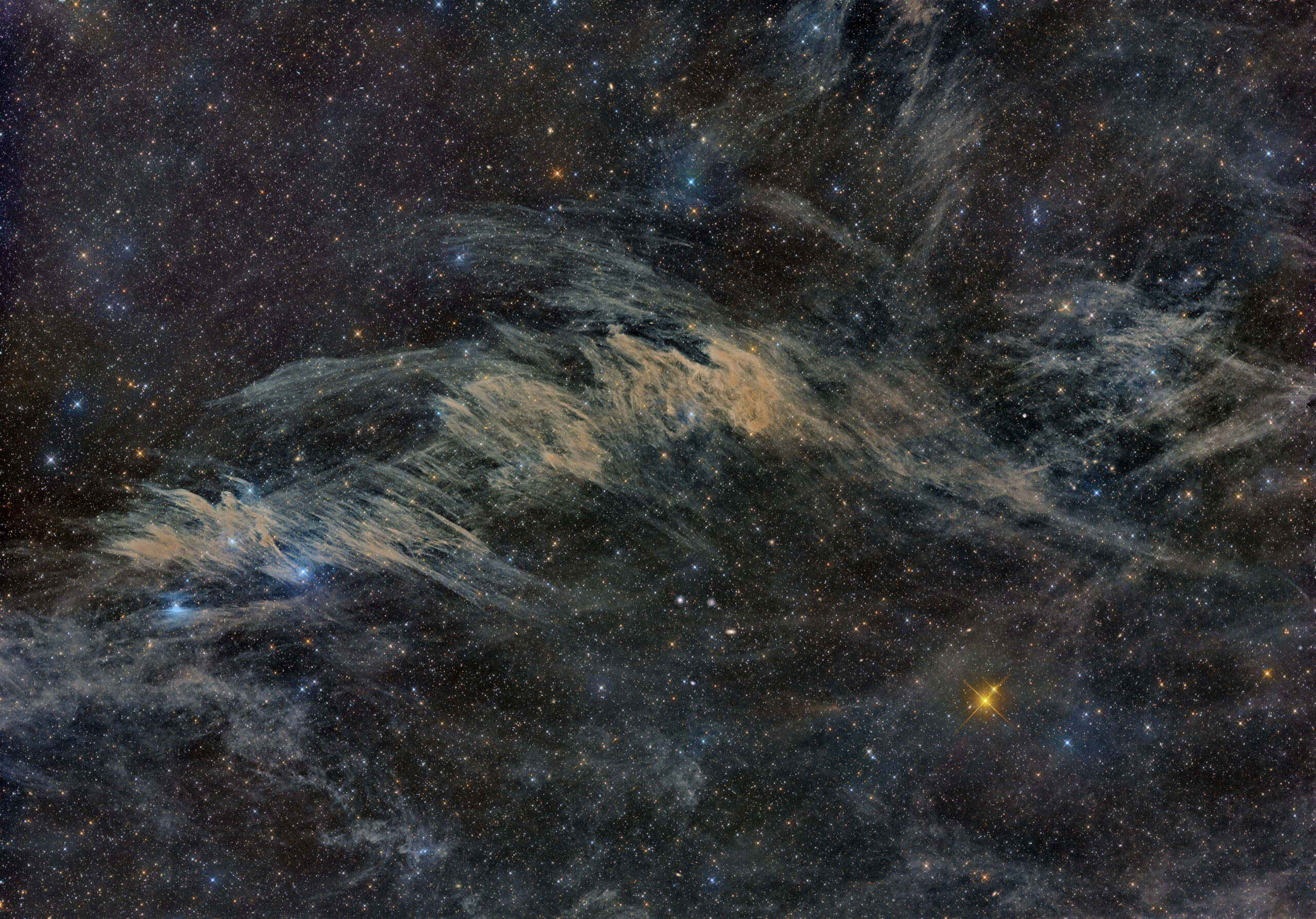
Four Panel Mosaic South Celestial Serpent.
Many maps in the 16th and 17th century depicted strange sea monsters.
One of the most famous images of a sea monster on a map is that of a giant sea-serpent attacking a ship off the coast of Norway on Olaus Magnus’s Carta marina of 1539.
Olaus probably didn’t know about the South Celestial Serpent.
At Declination 80 south, this integrated flux nebula covers several degrees of the sky but is very faint.
IFN are composed of diffuse dust particles, hydrogen and carbon monoxide and other elements. Unlike reflection nebula’s which are lit by proximate stars, IFN are illuminated by the glow of the Milky Way Galaxy and are much fainter than most reflection nebulae. IFN were only identified quite recently in great part due to improvements in the sensitivity of imaging sensors. They are very prominent in the direction of both the north and south celestial poles.
Imaged in four panels in LRGB on my Planewave DR 350 at Observatorio El Sauce, Chile.
Image Processing and Acquisition: Mike Selby
www.throughlightandtime.com